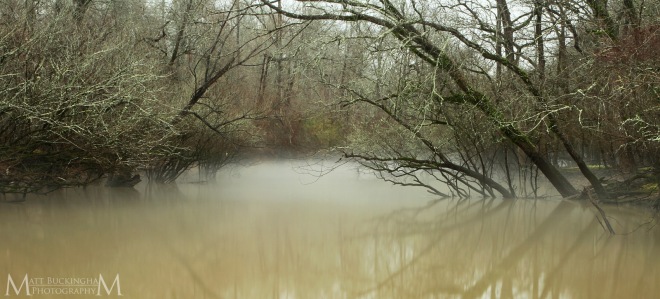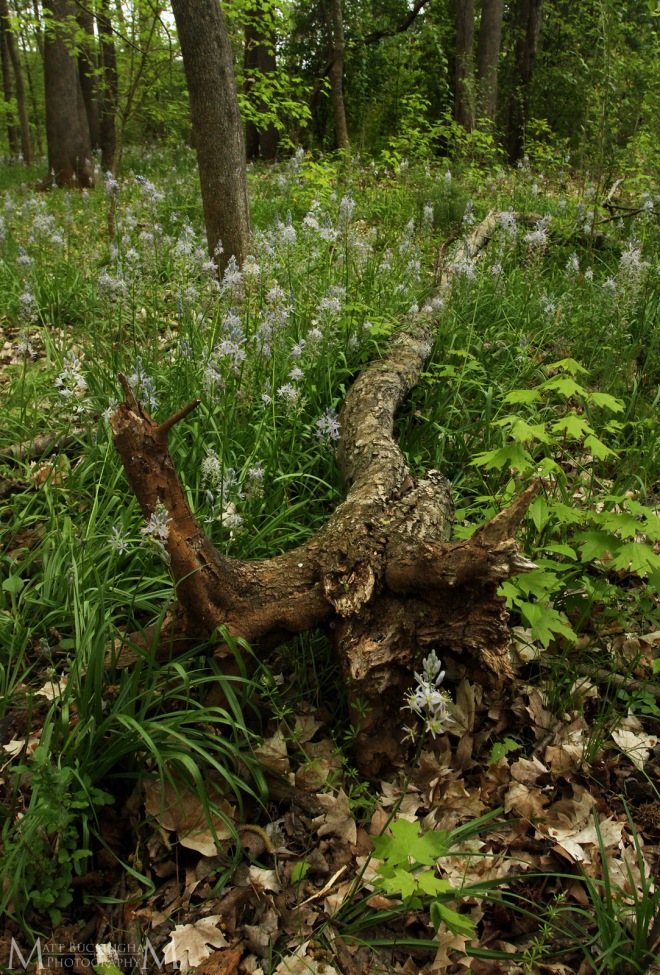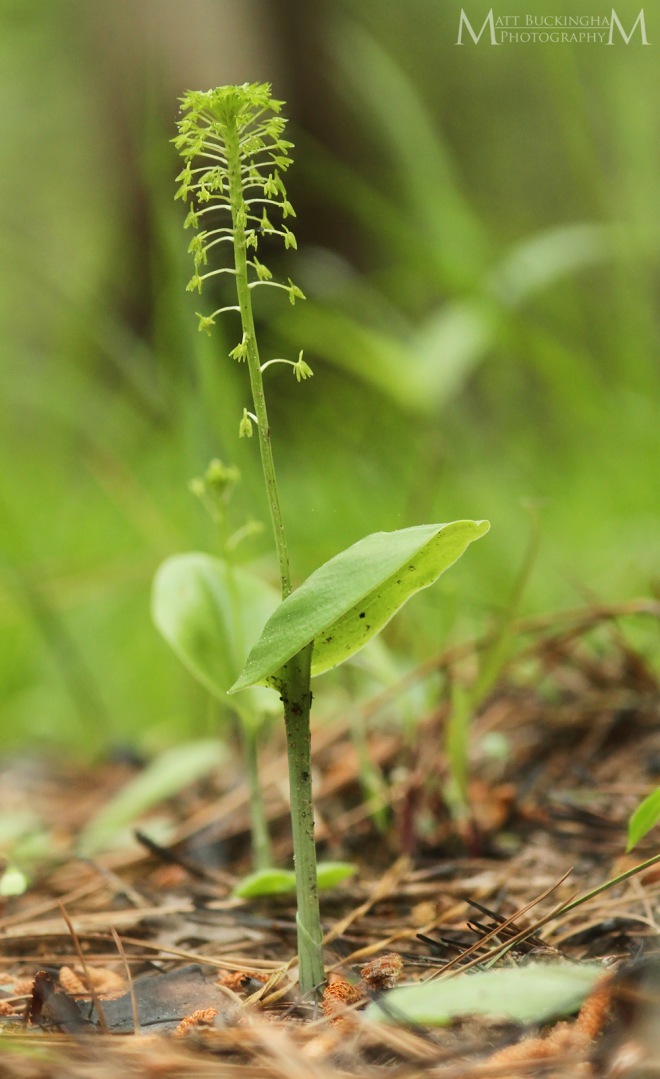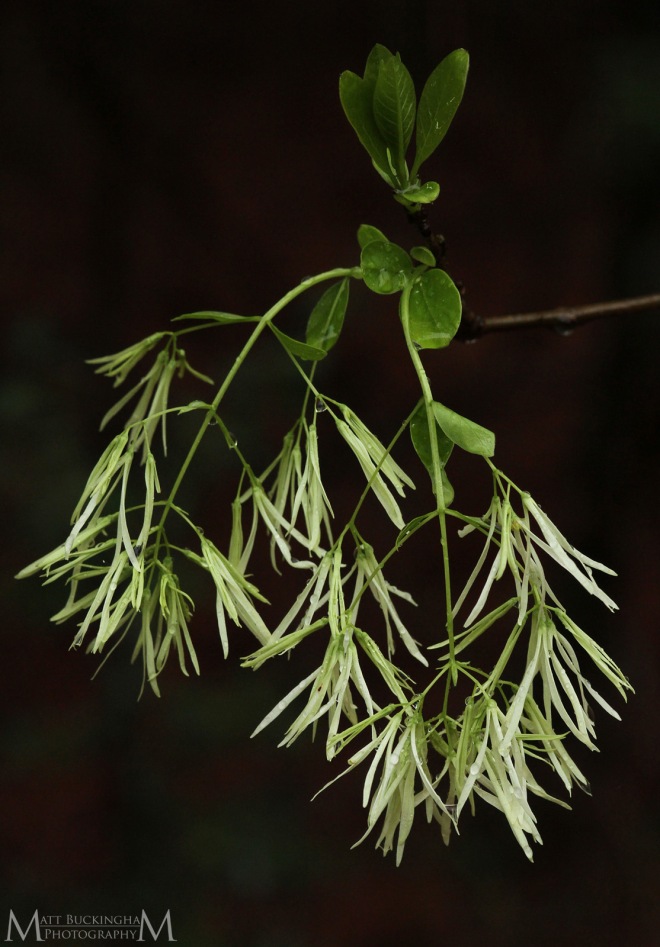
Kentucky Lady’s Slippers – A Gift of Spring
As I sit here typing, we are in the height of August, which has the misfortune of traditionally being our most miserable month – at least climatically speaking. So as the dried grass crunches beneath my feet and my skin bakes under triple digit temperatures, it’s easy to escape back to a day over four months ago.
It was the last day of March. There was a definite chill in the air as I set out into the forest. The gray of dawn was made darker by the the canopy of beech and oak towering one hundred feet above my head. I worried for a moment that I may not see them – my elusive botanical quarry. But despite the dim light of the understory, the yellow egg-sized blooms of the Kentucky Lady’s Slipper (Cypripedium kentuckiense) caught my eye like a beacon sent out to some wayfaring sailor, and drew me to them with a siren’s song of its enigmatic beauty.
A few days prior my friend Peter Loos had called and told me that the slippers were out early this year, a full two weeks early. He also told me that one population, which typically has only a plant or two in flower, was displaying six perfect blooms this year. If it weren’t for his call, I would have likely missed out on a very special experience.
The soil was cold and damp as I sat, saturated from a previous day’s rain. It was still to early for photography, the forest too dark to properly render the color of the scene. So I sat and waited in the company of the forest. I admired the slippers and the ferns that grew around them. I listen to the familiar songs of Red-eyed Vireos, Summer Tanagers and Hooded Warblers, and the distant trill of a Northern Parula. After some time I could see hints of dappled sun in the highest leaves in the canopy. The forest grew brighter, its colors warmed. In this new light I could see distant azalea blooms lining the creek downslope.
I had to pay close attention to the light. There would only be a brief moment for me to capture the image I was after. That time when the ambient light early morning sun illuminated the forest, but before its rays penetrated the canopy, casting sun spots and uneven light on the forest floor. Finally the moment was right, and I captured the image above.
Though the end of March may have been the height of the season, spring itself had begun nearly two months prior, when the first of the spring ephemerals pushed their way through the leaf litter. Perhaps my favorite of these is the Bloodroot (Sanguinaria canadensis), so named for the red sap of its roots that has long been used for a wide range of medicinal purposes. Bloodroot is now rare in Texas, where it hold on in a few remnant patches of mature hardwood forest.

Bloodroot – An Ode to Spring
Like the Bloodroot, the White Trout Lily (Erythronium albidum) is one of our first harbingers of spring. White Trout Lily can be found throughout the Pineywoods. Though it is common nowhere, it is more frequently encountered in the northern and western portions of this forested ecoregion. Elsewhere in the state it can be found in some Post Oak Savannah and Cross Timber woodlands.

Trout Lily
It is not just the rich woods that experience a flush in early spring activity. In mid February the wetland pine savannahs of East Texas appear bleak, their grasses turned brown by the short days and biting cold of winter. But it is in that time that the Woolly Sunbonnet (Chaptalia tomentosa) emerges, opening its blooms in the midday sun.

Woolly Sunbonnet
Though the forest floor may be coming to life, early spring still finds the trees leafless and dreary. I captured the haunting scene below as a fog rolled in over the Angelina River on a cold day in mid February.

The Angelina River looks to be a dismal place in early spring.
Even in early March the forest still seems gripped in winter. At least from a distance…

A rare waterfall in one of the last patches of old growth forest in East Texas.

A small stream flows, fueled by spring rains
But closer examination shows that by early March the forest has come alive. The scene below was captured at our friends Susan and Viron’s land. Under their stewardship, a spectacular patch of rich mesic forest has persisted. Here nearly all of the plants that have become exceedingly rare elsewhere in the states, still thrive. Their forest contains colonies of Yellow Trout Lily (Erythronium rostratum) that cover acres!

Yellow Trout Lilies – Ephemeral

Yellow Trout Lilies
Their land is also home to one of only two known populations of False Rue Anemone (Enemion biternatum) in the state.

False Rue Anemone
Spring Beauties (Claytonia virginica) flourish here as well. They are one of our most common spring ephemeral, but that in no way diminishes their beauty.

Spring Beauty
One of the more unexpected denizens of early spring is the Wrinkled Festive Tiger Beetle (Cicindela scutellaris rugata). Unlike most tiger beetles, which are most active during the summer, the Wrinkled Festive Tiger Beetle is active in the early spring, and by late May are almost impossible to find.

Wrinkled Festive Tiger Beetle
This jewel-like beetle is restricted to eastern Texas, western Louisiana, and extreme southwestern Arkansas and southeastern Louisiana. Here it occurs in areas with vast expanses of bare sand such as xeric sandhills and sand “blowouts” in the Pineywoods and Post Oak Savannah.

Wrinkled Festive Tiger Beetle
By mid-March most of the woodlands in the southern Pineywoods had begun to leaf-out. The scene below was captured in a vast floodplain adjacent Big Sandy Creek in the Big Thicket.

Vernal
As the freshly emerging leaves hardwoods begin to turn the slopes and floodplains green, a different explosion of color is occurring in a precious few longleaf pine savannahs in the Big Thicket. At the few sites where it still occurs, the Federally Endangered Texas Trailing Phlox (Phlox nivalis ssp. texensis) reaches peak bloom in mid-March.

Texas Trailing Phlox
Around the same time, a very different phlox species blooms in the shade American Beech and other hardwoods of rich forested slopes. Though common throughout much of its range in eastern North America, Wild Blue Phlox (Phlox divaricata) is rare in Texas. The combination of pale blue blooms, feathery fern fronds and a gnarly old hornbeam created a scene that seemed like something more suited for a Tolkien novel than the Pineywoods.

Mirkwood
While we’re on the topic of phlox, one can’t drive the backroads of the Big Thicket without admiring the recently described Texas endemic Big Thicket Phlox (Phlox pulcherrima), a member of the Phlox pilosa complex.

Big Thicket Phlox
With March in full swing, color was coming to all of the vegetative communities of the Pineywoods. Wright’s Lily (Schoenolirion wrightii), a rare species of glades and barrens came into bloom over deposits of Catahoula Sandstone.

Wright’s Lily
And expansive drifts of Wild Hyacinth (Camassia scilloides) turned the forest floor blue in this woodland in the northern Pineywoods.

Rebirth
One afternoon, as we were exploring the longleaf pine savannahs of the Angelina National Forest, Carolina spotted a splash of yellow in the distance. It turned out to be a small flatwoods pond decorated with the blooms of thousands of Floating Bladderworts (Utricularia radiata). These plants are carnivorous, and I couldn’t help but think that below the surface was something akin to a minefield for the unfortunate aquatic invertebrates that dwell within.

Floating Bladderworts – Minefield
Not all of spring’s palate is painted on the forest floor however, and a multitude of trees and shrubs put on an impressive display as they come into flower. In the picture below White Fringetree (Chionanthus virginicus) flowers in the foreground while Flowering Dogwood (Cornus florida) blooms in the distance.

White Fringetree – Old Man of the Woods
By late March the Mayapples (Podophyllum peltatum) have taken over the forest floor. One of my favorite spring ephemerals, Mayapple is still quite easy to find in certain parts of East Texas, unlike so many other species of rich woods that have become increasingly rare.

Mayapple – Sea of Green
The large umbrella-shaped leaves of Mayapple are actually toxic. Only the ripe fruit is edible. The downy white blooms hang beneath the leaves. Non-blooming plants always sport a single leaf, while those that bloom have two.

Mayapples
Along the bluffs lining the Angelina River, Carolina and I found a large colony of Wild Comfrey (Cynoglossum virginianum). These wildflowers, with their downy basal leaves and tiny sky-blue blooms have become quite uncommon in Texas. They often occur in the company of the Kentucky Lady’s Slipper, and I couldn’t help but wonder of the enigmatic orchid once called these hills home.

Wild Comfrey Hills

Wild Comfrey Blooms
Another uncommon species often found in the presence of the lady’s slipper is the Bigleaf Snowbell (Styrax grandifolia). It’s easy to see how this species gets its common name, as thousands of small white blooms may dangle from its branches in early April.

Bigleaf Snowbell
In the vast floodplain of the Neches River I spotted a large colony of Eastern Bluestar (Amsonia tabernaemontana), and I stood in the flood waters to photograph its delicate blooms in the evening light.

Eastern Bluestar
Every spring I look forward to the emergence of the trilliums. This year I found this large colony of Sabine River Wakerobin (Trillium gracile) in a rich hardwood forest in Sabine County.

Sabine River Wakerobin
By mid-April many of the spring ephemerals have already faded, and a new cast of floral characters appears on the scene. Clasping Milkweed (Asclepias amplexicaulis) emerges from deep sands and displays its bizarre blooms for all the pollinating world to see.

Clasping Milkweed
Deep in the forest a very different milkweed was blooming. By mid April the White (A.K.A Redring) Milkweed was beginning to come into flower.

White Milkweed
The Zigzag Iris (Iris brevicaulis) can be found on the margins of wetlands in the Pineywoods.

Zigzag Iris
Flowering Dogwood is one of the most familiar small trees of East Texas. Lesser known are the other species of dogwood that occur here. This spring we found several Roughleaf Dogwoods (Cornus drummondii) in bloom along a small stream in Houston County.

Roughleaf Dogwood
The Rose Pogonia (A.K.A. Snakemouth Orchid) (Pogonia ophioglossoides) is always a crowd-pleaser. I found several blooming in late April with my friend James Childress in a remote seep on private land.

Rose Pogonia
One evening in April I received a call from my friend, and author of The Wild Orchids of Texas, Joe Liggio. He told me that while returning home from a long day of botanizing, he spotted an uncommon wildflower along a remote road in Liberty County. It was the Foxglove Penstemon (Penstemon digitalis). Shortly after photographing the plants at Joe’s site, I found it growing in similar remoteness in Sabine County. This penstemon has a fairly broad distribution in the eastern third of the state, occurring in scattered populations in rich, open woodlands and their margins. There is some debate as to whether it is native outside northeast Texas, while others question whether or not its native to the state at all. The plants that Joe and I discovered were, in my opinion, unlikely candidates for escapees from cultivation. This leads me to believe that is in fact native to East Texas.

Foxglove Penstemon

Foxglove Penstemon
Also in April, my friend Scott Wahlberg and I visited a site in the Big Thicket where last year I was able to track down Wild Blue Lupine (Lupinus perennis). I went into some detail on this species in a blog post last year, so I won’t say much here, save to mention it’s striking beauty.

Wild Blue Lupine

Wild Blue Lupine
Another species that I pursued last year was the Green Adder’s Mouth (Malaxis unifolia). Carolina and I found them again this year, and I photographed them to the sound of the thunder of a rapidly approaching storm.

En-route to photograph the adder’s mouth, we spotted a striking little purple legume flowering alongside the road. It was a patch of Sampson’s Snakeroot (Orbexilum pedunculatum), a plant I only occasionally encounter in the Pineywoods.

Sampson’s Snankeroot
Though it’s pushing the limits of late spring and flirting with early summer, late May still has a lot to offer, botanically speaking. One warm evening in late May, Caro and I drove out to Walker County to photograph the Bush’s Purple Coneflower (Echinacea paradoxa var. neglecta). This puzzling population was found growing in a calcareous prairie remnant by my friend Eric Keith. Echinacea paradoxa is a species of coneflower found in the Ozark Plateau and isolated populations in southern Oklahoma and southeast Texas. While typically yellow, E. paradoxa var. neglecta range from pale purple to deep pink. The population here in southeast Texas is disjunct from other known populations by hundreds of miles.

So it was that the Spring of 2018 came to a close and gave way to summer. It was hard to say goodbye to the cool, gray days of Spring, but as a naturalist I find some joy in each of our seasons. Soon the sun would be blaring, the cicadas would be trilling, and a whole new cast of plants and animals would make themselves known.

























